News and Offers
Fujifilm X100VI Alternatives
Last Updated on March 7, 2024 by Uscenes
Compact Camera Alternatives to the Fuji X100VI
The Fuji X100VI has had record breaking pre-sale orders. Fujifilm are unlikely to make enough cameras in the short term, so let’s look at some X100VI alternatives.
Used copies of the previous model in excellent condition are being sold for more than they were bought for. Click here for the Fujifilm X100VI current price on Amazon USA.
This post contains no affiliate links. It is just my opinions based on using and researching the different cameras inside this article. The X100VI is a compact camera that is very popular for street photography, plus as a compact travel camera. So we will be comparing it with similar bodies, that mostly have a left viewfinder.
Is the X100VI worth the hype?
It is a very good looking camera body and it has an excellent fixed lens, so you don’t need to worry about buying more Fujifilm lens, like you need to do with other Fuji APSC cameras. The RRP of the X100V was $1399, but the price has increased a few hundred dollars due to the new 40MP sensor, image stabilization and inflation. You do need to buy the filter for an extra hundred bucks or so to make it weather resistant.
The sensor isn’t full frame, but it is still big for a camera this size, being APSC (1.5x crop). The crop means that the 23mm lens is equivalent to 35mm on full frame. A classic focal length for street photography and arguably the best versatile focal length.
Overheating Problem When Shooting Video on the X100VI
The body is well made, like most Fujifilm cameras, but there have ben issues. Initially there were overheating problems, making it an unsuitable body if you shoot much video. I tried one in a camera store and being a Uscenes videographer, I wanted to test the video. I put it on the best settings and let it record in an air conditioned store. It overheated in minutes and turned off.
Apparently, Fuji later brought out some firmware that solved the problem, although it may be bad for the camera body if they are letting it heat up and not switch off to protect the inside. It was very hot in my hand and doesn’t have a rubber grip like other models, so it may be necessary to use a tripod for long video (it is limited to 10 minutes in 4K).
The Fuji X100VI has a unique OVF/EVF
There were other issues which resulted in a small percentage of users needing to send their X100V back to Fuji. This included issues with the hybrid OVF/EVF. The X100 series boasts a unique optical viewfinder, combined with an electronic viewfinder. I experienced this with Fuji’s X Pro 2 and found it useful when “working the scene” doing street photography, as you can see outside the frame line to judge when to take a shot better as your subject enters the frame. But like many people, I ended up preferring the EVF more, as it shows a realistic preview of your final image.
Only the X Pro line has the same OVF/EVF. This line is bigger, more expensive and uses interchangeable lenses. If you don’t mind the short eye point on left EVF Fuji bodies, an X Pro makes a great alternative. The X Pro 1 is too slow and old. The X Pro 2 was released in 2016 and has much faster focusing. It is very well built and a very safe buy.
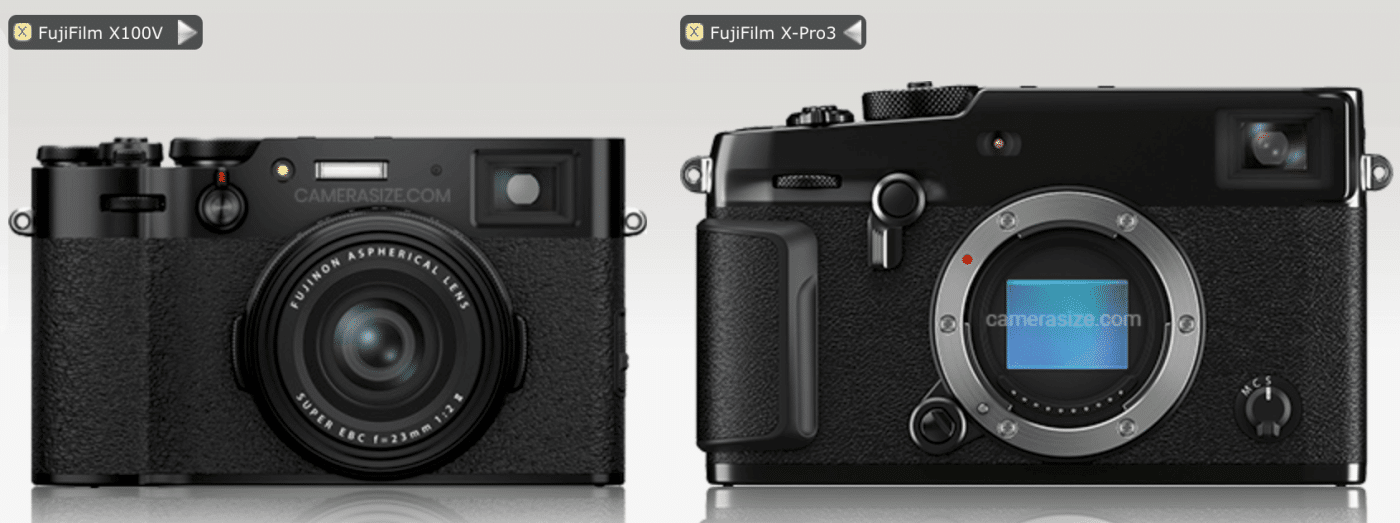
X100VI Alternative #1 – The Fujifilm X Pro 3
The Fujifilm X Pro 3 (RRP $1,999) was released just before the X100V, so it has similar technology inside, including the same film simulations. With modern Fuji lenses it should focus faster than the X100V, but it will be similar with older lenses including the two Fuji pancakes: the 18mm f2 and the 27mm f2.8 (pictured). These 2 lenses make the combo not too much bigger than an X100V. Or you could use the faster focusing 23mm f2 for the same focal length and aperture as the X100V.
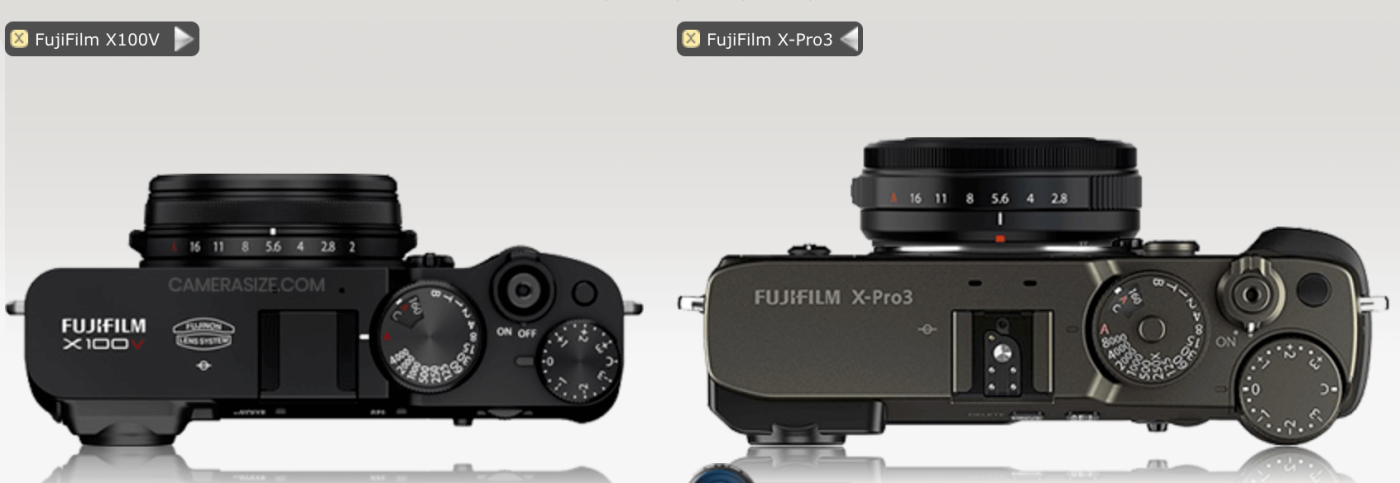
The X Pro 3 has an inward facing rear LCD. If you want it showing without flipping it up, you would need to grab the previous X Pro 2. It is worth noting that the X Pro 3 also had a number of people needing to return the camera with various issues (mostly problems with the OVF/EVF or the rear LCD). The X Pro 2 was a more solid camera you could rely on and will naturally be a cheaper option.
X100VI Alternative #2 – The Fujifilm XE-4
The Fuji XE-4 (RRP $849) is the other rangefinder style option from Fujifilm, with a left EVF. It has a more minimal design than previous XE models. I gave it a miss due to the EVF and lack of any grip on the front or rear for your thumb. The X100V has a slight bump which makes it easier to grip.
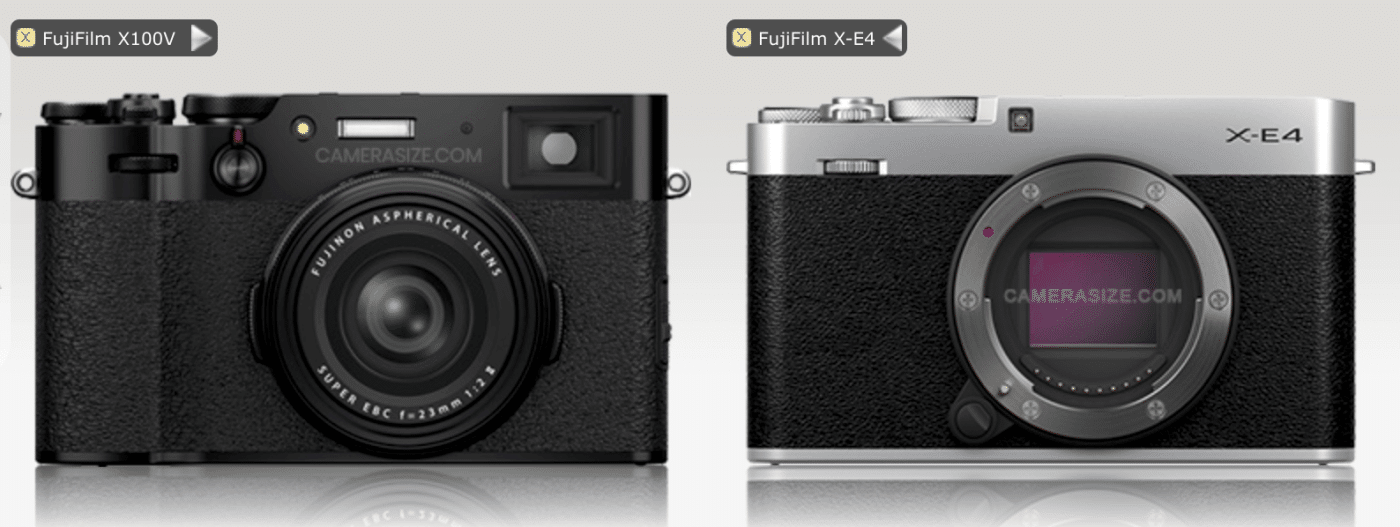
The X Pro bodies have a substantial rubber grip and a comfortable thumb grip on the rear. I am a big fan of the XE-2, which is a body that looks more like a mini X Pro. The XE-4 is more like an ILC (interchangeable lens camera) X100V due to it’s more minimal and stylish design. The X-E4 and the X100F aren’t currently on Amazon but you can click here for the Fujifilm X-E3 current price on Amazon USA.
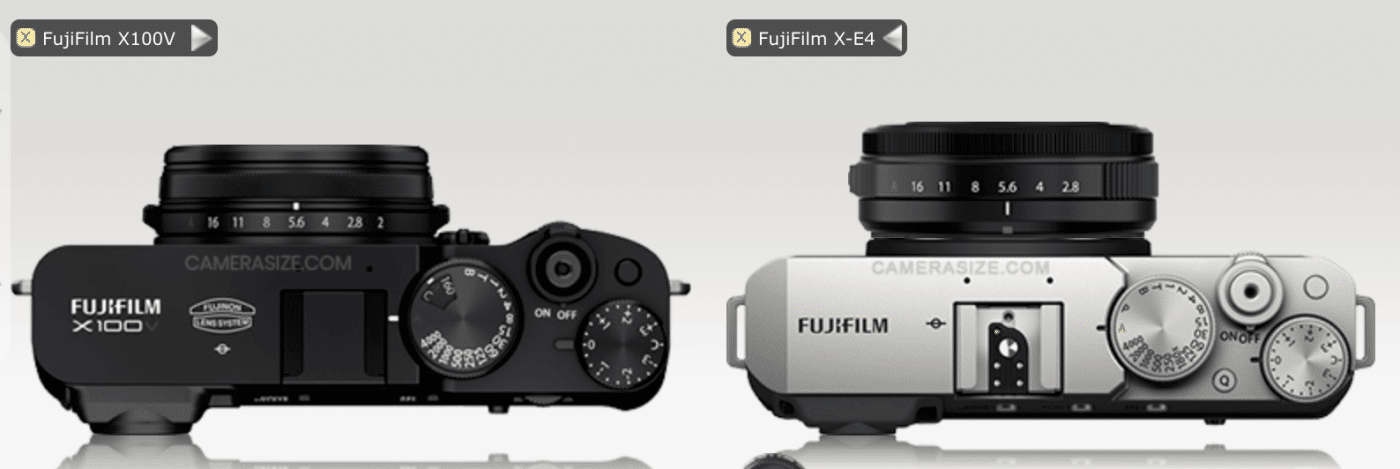
X100VI Alternative #3 – The Ricoh GR III
This $899 RRP pocket camera is tiny and probably the smallest APSC camera available. It boasts an 18.5mm f2 lens, or you can get the Ricoh GR IIIx which has a 27mm f2 lens. This line is also very popular with street photographers. It costs less than the X100V, but it lacks a viewfinder.

The Ricoh JPGs are good, with Ricoh treating it’s color profiles like film simulations. This is what also Fuji does, unlike other brands. The high contrast Black and White profile is fun, plus the JPG colors are pleasing. I recall enjoying the yellows and pinks when I owned the first APSC GR. You may want to click here to see if the Ricoh GR III is currently on Amazon USA.
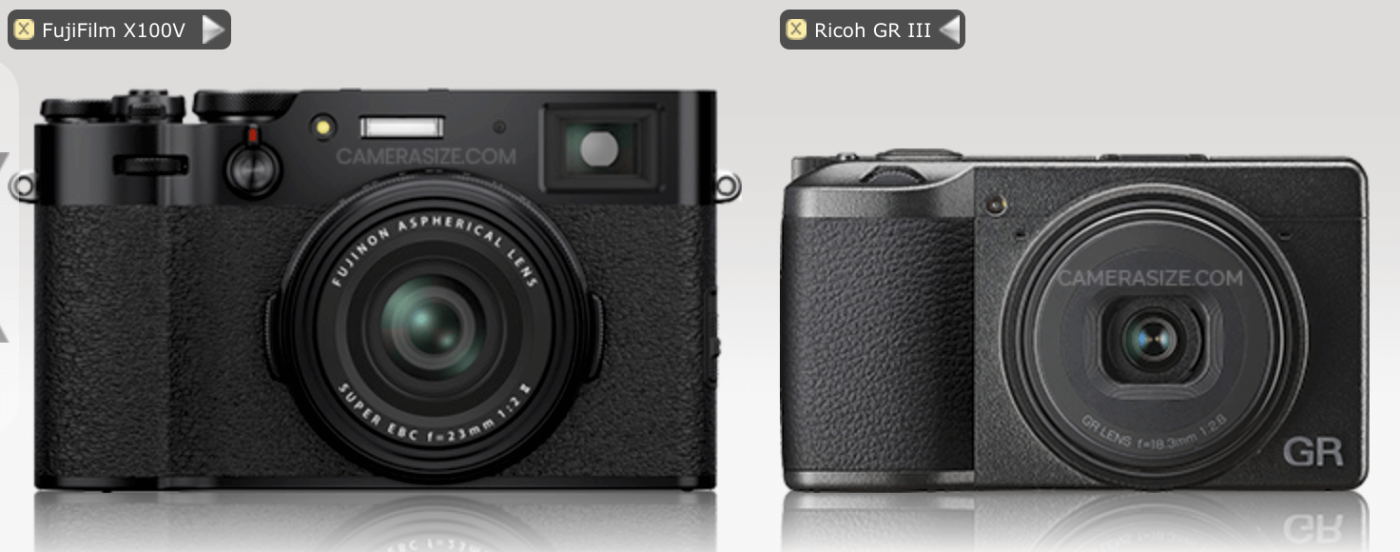
X100VI Alternative #4 – Sony A6400
This is not the trendy option, but it is very practical. This body is smaller than the Fuji and it can be paired with the Sony 20mm f2.8 for a compact combo. Sony has a few other options in their A6xxx line, but the A6400 (RRP $898) is my preferred choice, being smaller than the stabilized A6600.
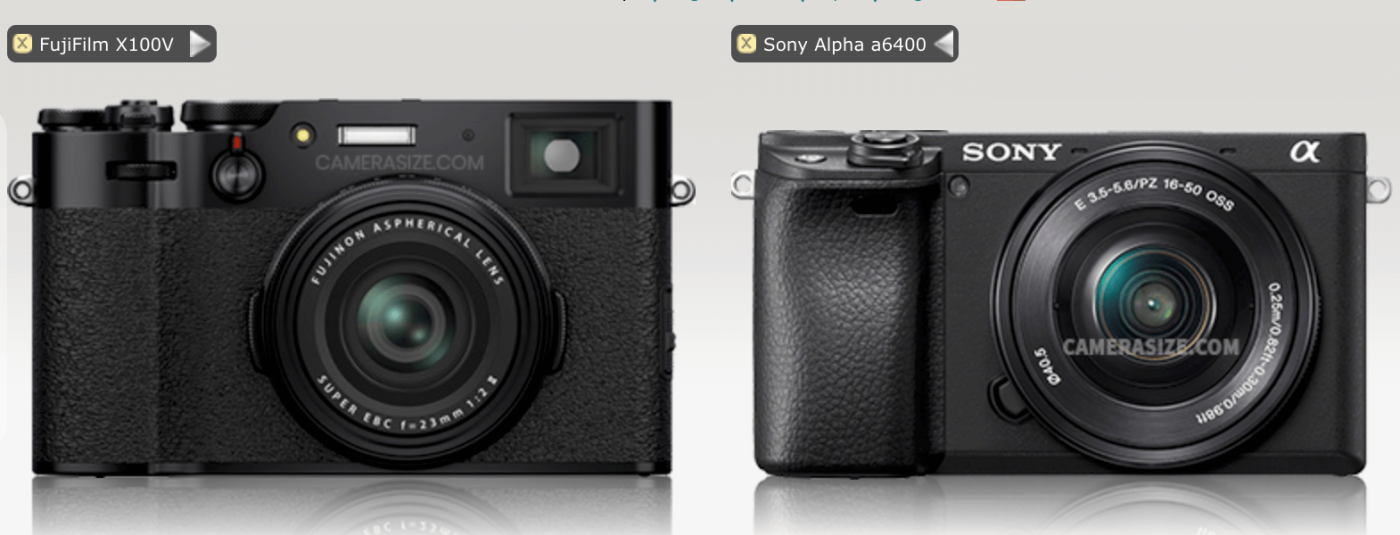
Sony is famed for industry leading autofocus. It is especially impressive for tracking both humans and animals with their impressive eye autofocus tracking. The A6400 has some weather resistance, like the X100v (when you add the extra lens filter). Click here to see the A6400 on Amazon USA.
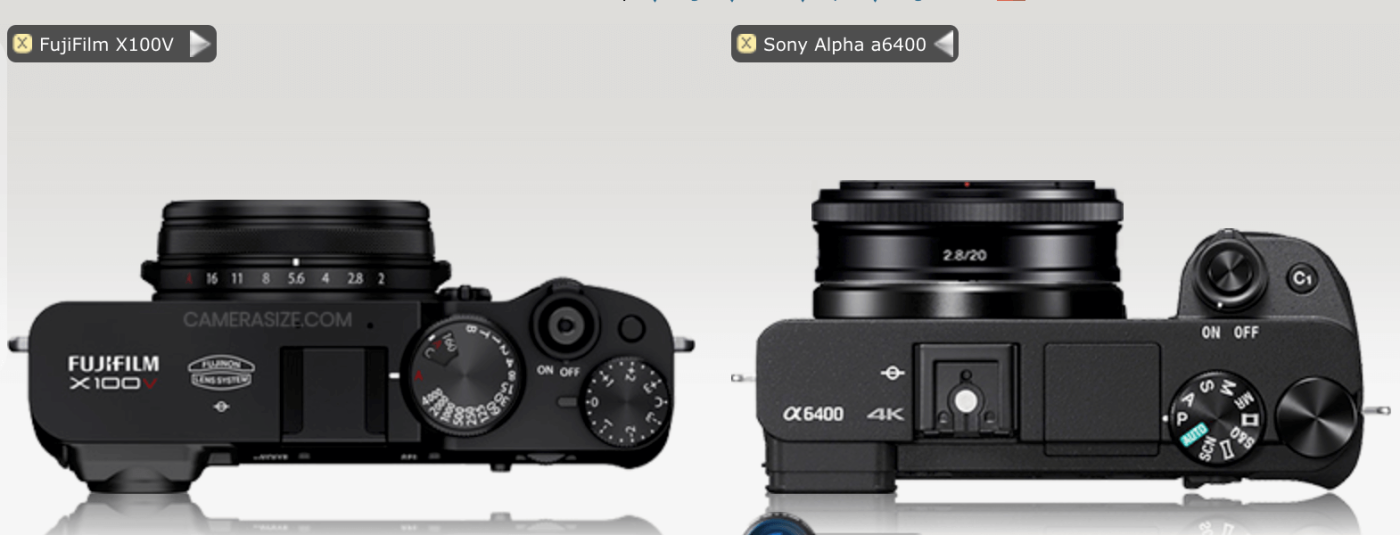
X100VI Alternative #5 Premium Full Frame Fixed Lens Cameras (Leica Q2 and Sony RX1 RII)
We have combined these two bodies as they are quite a jump in price. They both cost more than double the X100VI, although used copies will be less and with the X100V sometimes selling much higher than the RRP, they may be worth considering.

The Leica Q2 ($4995 RRP) has a fixed 28mm f2 lens (18.5mm equivalent on APSC). The Sony RX1 RII ($3300 RRP) has a 35mm f2 lens, making it more similar to the X100V. Both are fairly compact, with the Sony being so small that it has a pop-up EVF. Neither body is very comfortable in hand, but Leica cameras always lack a grip, it is part of their trendy minimal vibe.

The 47.3MP Leica Q2 is the newer option, but the Sony is no slouch with it’s 42.4MP sensor. It is worth keeping in mind that like most Leica’s, the Q2 is manual focus only. This is helped with it’s rangefinder OVF. When you buy a Leica you are buying a lifestyle choice and a certain retro experience. See the Leica Q2 options on Amazon, including a limited edition version and a monochrome only version.
Honorable mentions
This list could go on forever, instead lets look at a few other options that could easily have been added. Firstly lets take a step down in sensor size to Micro Four Thirds (M43/MFT). The fairly old Olympus Pen F ($1199 RRP) is a very stylish camera with a similar look to the X100V. The Olympus Pen F lacks the film simulations of the X100V, but Olympus colors are well worth considering for JPG shooters, including a decent black and white option.

Then we have the much cheaper Panasonic GX series. The GX9 and GX85 offer similar left EVF bodies (check MPB or eBay for used prices). The latter is very good value these days and if I hadn’t hated the EVF so much, it would have made the list. Being a glasses wearer, I found the EVF almost unusable, it smeared at the edges. But for most people it is fine. The newer GX9 has a tilting EVF, which is a feature some people will like.
The M43 system is where I spend a few years early on. I filmed various Uscenes videos with the central EVF GH4 and G7, the latter being one of my favorite bodies – it had improved colors over the “pro” GH4, most of the same video specs and it was far cheaper. There are lots of very good lenses for the system. Including the Panasonic 14mm f2.5 pancake, the Panasonic Leica 15mm f1.7 which has an aperture ring), plus Olympus has a few 17mm options. A lot of street shooters also like the old 20mm f1.7 pancake, but I found it’s slow autofocus a minus compared to the other lenses.

The Leica CL (available for around $1,500 used) is an underrated APSC body with Leica looks at a mid-range price point. It can be paired with the great value Sigma APSC lenses: 16mm f1.4, 23mm f1.4, 30mm 1.4, 56mm f1.4 and 18-50mm f2.8. These Sigma lenses are also available on Sony E mount and Fujifilm X Mount. Some of them are available on M43 and Canon M mount.
The latter is a line I am not familiar with, because none of the cameras have a left EVF, but if you don’t need that the Canon M mount line is probably going to offer you great value now that it is being phased out. They have a 22mm pancake lens which would get you close to an X100V experience. For the Leica CL, you would need to fork out more money for a pancake, for their little 18mm APSC lens. They also have a 23mm f2 which is quite small, but not cheap.
Last But Not Least, Some Old Bodies for Those on a Budget
Finally, let’s mention a few older bodies for those of us who don’t mind shooting more deliberatley, with slower autofocus. My top pick is the 16MP Fujifilm XE2, which is my all time favorite camera body. It is certainly showing it’s age these days, but used prices have risen (a few hundred bucks) in the past couple of years as people go back to older Fujis like this. This was my first Fuji camera and after owning “pro” bodies like the XT3 and X Pro 2, I returned to the XE2. I liked the left EVF with a 23mm eye point (all newer left EVF Fujis have a ~17mm eye point). I also preferred the body to newer models in the XE series, as it was like a mini X Pro 1.
You could also consider older versions of the X100 series, like the X100V which is the 5th iteration of the X100 series. They started many years ago with the 12MP, before the X Trans line had even been invented. The older bodies offer lower resolution and slower autofocus, but they keep the charm of the X100VI. I would avoid the very oldest models and stick to ones made in 2016 onwards, although my beloved XE2 came out in 2013. If unsure check some comparison videos on YouTube. The Fuji X100T might be a good place to start.
Conclusion to this Fuji X100VI Alternative Article
The X100VI has a unique shooting experience, thanks to it’s slim body, fixed pancake lens, hybrid OVF/EVF and Fujifilm film simulations. The most obvious alternative is an older version of the X100 line. Then it comes down to what your shooting preferences area e.g. do you want to shoot in JPG?
If you can shoot in raw then you can get Fuji colors on any camera with the help of Cobalt Image’s Fuji emulations pack. It isn’t cheap, but I think it is worth it. I shoot street 90% of the time with a Sony A6400 and I use Fuji colors as the default all of the time. I tend to switch between Classic Negative and Nostalgic Negative.
It is worth noting that Nostalgic Negative is a new film simulation that isn’t available on the X100VI. It is only available on a couple of newer Fuji bodies at the moment. Therefore, it might be worth considering using Cobalt on raw files, or even waiting for the follow up to the X100V. I love the Classic Negative color profile, which came out with The X100VI generation bodies. But is can be harsh on skin tones. Nostalgic Negative turns down the contrast and gives a more pleasing and warm alternative. As of 7 May 2023, only the XT3 and XH2 have this new film simulation (plus a couple of Medium Format Fuji bodies, but these are very big and expensive).
Which One Would I Choose?
I love the Sony A6400. It pairs with their 20mm pancake lens for similar experience to the Fuji X100VI. It has a superior EVF, thanks to longer eye relief (23mm Vs <17mm on the X100VI), although it lacks an OVF. The camera is cheaper than the Fuji, but when you add a lens or two it works out similar.
The Fuji is more fun to use with all the manual controls, but the A6400 is far superior for continuous autofocus. If you take photos of kids or sports or anything else with a lot of movement, get the A6400 or the new A6700.
If you buy the A6400 used with the Sony 20mm pancake it should be under half the price of a new X100Vi. I bought the A6400 camera (body only) new for $850 and the lens used for just under $200 (MPB is a good site for used gear).
The Sony also lacks the charm that comes from shooting the Fuji camera e.g. less physical dials and no film simulations. But the Sony is faster focusing and being an ILC, I can switch lenses (currently enjoying the tiny Sigma 18-50mm f2.8). This is important as I also shoot Uscenes videos as well as enjoying travel and street photography.
Although I use the A6400, I didn’t buy it as a direct alternative to the X100VI. I would have to bring my Fuji XE2 into the mix as it offers the Fuji retro charm, with the 27mm f2.8 pancake lens. Owning both is a satisfying alternative, but I will be very interested to see what’s next in line for Fujifilm’s X100 series.
Being a fan of the Nostalgic Negative film simulation, I don’t want an X100V, but may want it’s successor. I currently get to use this film sim and Fuji’s others on both camera bodies via Cobalt Image’s profiles in Lightroom.
I started my Fuji journey shooting JPG only on the XE2, I currently only shoot raw, but it would be nice to one day return to shooting JPG only again. There is a certain charm to setting up “Fuji recipes” in-camera with tweaks to various settings, like saturation, contrast and shadows.
Images: all images in this article have been taken from camerasize.com where you can compare the sizes of camera bodies with and without most lenses.


